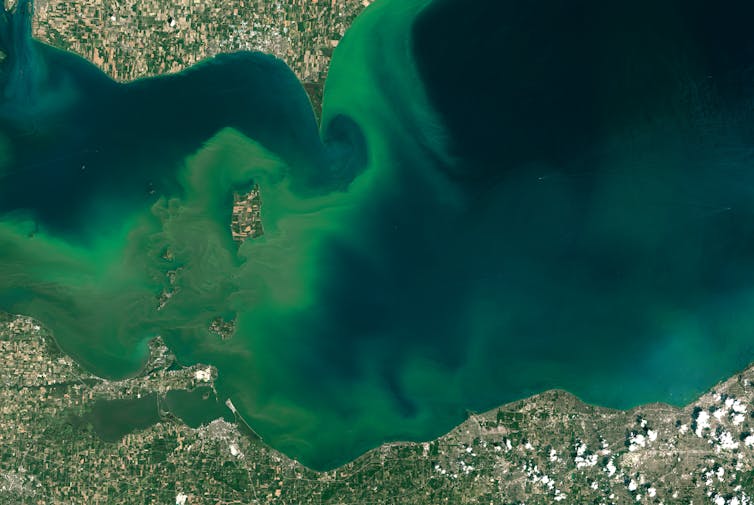By: Misti Crane
Columbus, USA.- Harmful algal blooms in rivers and streams are neither well-understood nor easily predicted, and researchers at The Ohio State University are hoping to change that.
With a three-year $681,343 grant from the U.S. Environmental Protection Agency, a team of Ohio State scientists plans to develop a widely applicable system for assessing watershed health and determining when a crisis is looming.
“If we can create a diagnostic tool that can be used in watersheds of all types, it will allow us to better manage and prevent major problems relative to nutrient enrichment and harmful algal blooms,” said Mažeika Sullivan, the study’s leader and director of Ohio State’s Olentangy River Wetland Research Park.
“We want to take the science and create a tool for natural resources agencies, educators and watershed-protection organizations so that we can be less reactive and more proactive,” Sullivan said.
Much of the previous work on harmful algal blooms in Ohio has focused on the Lake Erie watershed. With this project, Sullivan and his collaborators aim to uncover more information about waterways in the Ohio River basin, and in the river itself.
Algae is a normal part of freshwater systems, but when harmful colonies proliferate, they choke out native plants and animals and can produce toxins that can be deadly to people and animals. Harmful algal blooms also raise the cost of water treatment and hurt tourism and recreation industries in Ohio and throughout the nation.
Stay Always Informed
Join our communities to instantly receive the most important news, reports, and analysis from the aquaculture industry.
To flourish, harmful algae need sunlight, slow-moving water and nutrients – specifically, nitrogen and phosphorous.
“We need to have a much better understanding of how these nutrients play out in all kinds of environments, including urban areas and forests and other non-agricultural watersheds,” said Sullivan, an associate professor of environment and natural resources.
“We think of harmful algal blooms mostly in lakes, but they can occur in rivers and reservoirs, and what this project is really getting at is understanding these problems in a different context because each individual ecosystem is different.”
The study focuses on Ohio River catchments of Ohio, Kentucky and Indiana and in particular on non-agricultural freshwaters. The grant is part of the U.S. EPA’s Science to Achieve Results program.
Contributors to shifts in nutrient levels in waterways include climate, landscape, flow and a multitude of other factors that the scientists will take into consideration as they develop their diagnostic tool, he said.
Though it’s early in the process, Sullivan said he anticipates a complex diagnostic model for scientific applications, and envisions a simpler online tool that would allow a user to plug in data on a specific watershed and receive a classification such as healthy, moderate risk or high-risk relative to nutrient enrichment and harmful algal blooms.
Other Ohio State researchers working on the project are Lauren Pintor and Kai Zhao, both assistant professors in the School of Environment and Natural Resources.
Source: Ohio State News
Editor at the digital magazine AquaHoy. He holds a degree in Aquaculture Biology from the National University of Santa (UNS) and a Master’s degree in Science and Innovation Management from the Polytechnic University of Valencia, with postgraduate diplomas in Business Innovation and Innovation Management. He possesses extensive experience in the aquaculture and fisheries sector, having led the Fisheries Innovation Unit of the National Program for Innovation in Fisheries and Aquaculture (PNIPA). He has served as a senior consultant in technology watch, an innovation project formulator and advisor, and a lecturer at UNS. He is a member of the Peruvian College of Biologists and was recognized by the World Aquaculture Society (WAS) in 2016 for his contribution to aquaculture.




